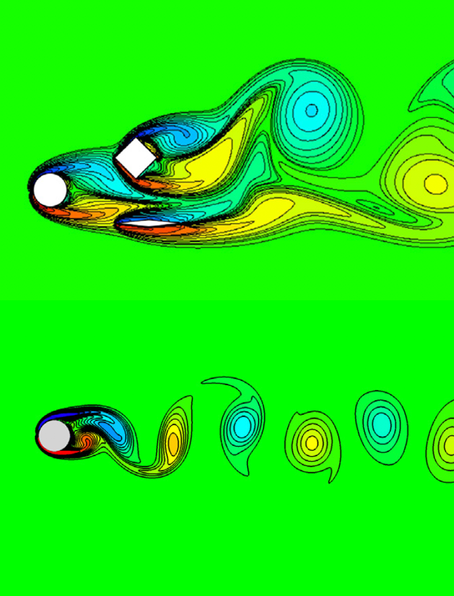Abstract
A new relaxed multi-direct-forcing immersed boundary-cascaded lattice Boltzmann method (MDF IB-CLBM) is proposed in this paper. This new technique improves the efficiency and accuracy of implementing no-slip boundaries on a single graphics processing unit (GPU). The traditional MDF-IBM method essentially solves a linear system iteratively with a relaxation parameter 1.0. By introducing an estimated optimal relaxation parameter, no-slip boundary is fulfilled after only one iteration in a typical case of flow around a fixed cylinder. This is a 7-fold speed-up over the traditional method. Since it is computationally expensive to calculate the estimated optimal relaxation parameter for moving boundaries in every time step, the impact of many factors on the value of the estimated optimal relaxation parameter is investigated. The studied parameters include the discrete delta function, shape of no-slip boundary, the relative distance between several no-slip boundaries, the spacing size between the Lagrangian points, and the relative movement of boundaries over underlying lattices. It is found that the first three factors have a more pronounced influence. Therefore, by considering these three key factors, an appropriate constant relaxation parameter can be determined before starting the simulations. Moreover, the relaxed method provides significant improvement to the traditional MDF-IBM with only a few modifications. The effectiveness of the method is demonstrated by dealing with the flow around a fixed cylinder, the flow past several obstacles, a particle moving in a linear shear flow, and the sedimentation of multiple particles in an enclosure.
